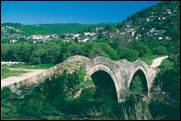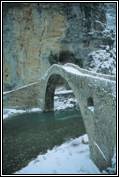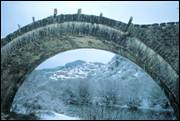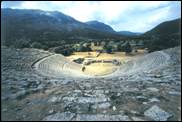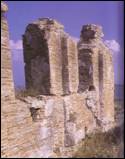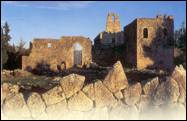|
||||||||||||||||||||||||||||||||||||||||||||||||||||||||||||||||||||||||
|
|
|||||||||||||
| The profile of the Region | ||||||||||
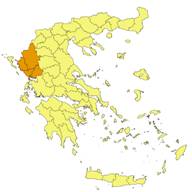 The Region of Epirus, located in the northwest of Greece, is one of the 13 regions of the country and includes four prefectures. The Region of Epirus, located in the northwest of Greece, is one of the 13 regions of the country and includes four prefectures.The total area of the region is 9.203 square kilometers, of which 14% is agriculture land, 52% is covered by grassland, 26% is forest and 3% represents the surface waters, while built up areas and other uses account for the remainder of the land. The 74% of the region, is mountainous areas. 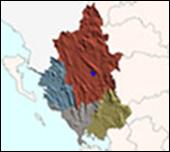 According to the census of 2001 Epirus has a population of 353.820 inhabitants, which represents the 3,3% of the total population of Greece. The population density is 38-inhabitants/ square km, which corresponds to less than a half of the average population density in Greece. According to the census of 2001 Epirus has a population of 353.820 inhabitants, which represents the 3,3% of the total population of Greece. The population density is 38-inhabitants/ square km, which corresponds to less than a half of the average population density in Greece.Ioannina built by a lake, is the biggest city of the Region (61.629 inhabitants), its administrative center and a peripheral development, pole. The towns Igoumenitsa (8.722 inhabitants), Preveza (16.321 inhabitants) and Arta (19.435 inhabitants), are the capitals of the corresponding prefectures. The primary sector employs 22,15% of the region’s workforce. (2001 census) 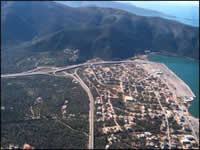 The secondary sector is less developed compared to the rest of the country and employs only 19,73% of the region’s workforce. The secondary sector is less developed compared to the rest of the country and employs only 19,73% of the region’s workforce. The tertiary sector employs 53,30% of the economically active population and is dominated by the tourism industry. The gross domestic product per capita represents the 81,88% of the corresponding country’s average (2003). In general, most of the basic economic indices for the Region are lower than those of the corresponding national average. The mountainous geomorphology of Epirus and its geographic position contributed to the Region’s long-term isolation and its slow development growth. 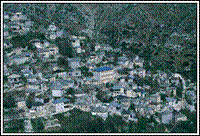 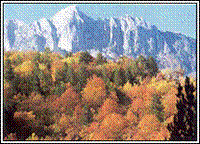 However, the implementation of major EU co-financed projects such as the Egnatia motorway, the western road axis, the new harbor of Igoumenitsa (the “gate” to the west) and the Aktion sub marine tunnel, have created more favorable conditions for the development of the region. However, the implementation of major EU co-financed projects such as the Egnatia motorway, the western road axis, the new harbor of Igoumenitsa (the “gate” to the west) and the Aktion sub marine tunnel, have created more favorable conditions for the development of the region. New development axes are being established parallel to the above mentioned road axes converting Epirus to a focal point between Italy, Northern Greece and Balkan Countries. Regarding the social infrastructure, the region is fairly well equipped with education and health services including the University and the university hospital of Ioannina. 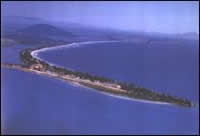 There are two airports servicing the region (Ioannina, Aktion) and a rail network is under planning. There are two airports servicing the region (Ioannina, Aktion) and a rail network is under planning.There are two industrial zones (Ioannina – Preveza) and the Manufacturing Park (near Igoumenitsa). The region includes a considerable number of nature protected areas: 29 Natura 2000 and a Ramsar site (Amvrakikos Gulf). The coastal biotopes (the Delta of Kalamas and Aheron, the Kalodiki marsh and Amvrakikos Gulf) host rare species of birds like the silver pelican. The mountainous area is dominated by the Pindus massive, where the homonymous national park is located. Here is one of the last biotopes of the brown bear all over Europe. The flora in Epirus is one of the richest in Greece, not only because of its diversity but also due to the existing rare species. Epirus is home to many monuments of all periods: ancient, roman, Byzantine and post Byzantine. The traditional settlements, especially on the mountainous areas of Zagori and Tzoumerka, are remarkable due to the architectural style of stone made buildings. The impressive stone bridges bring memories of travelers of the past who were traveling to other parts of Europe and the Balkans. Both the natural and the built environment create the basis for the development prospects of Epirus. Of course, here, like in other areas, development does not proceed without risks and success, presupposes the protection of the manmade and natural environment.
- The profile of the Region [pdf, 4.5Mb]
|




